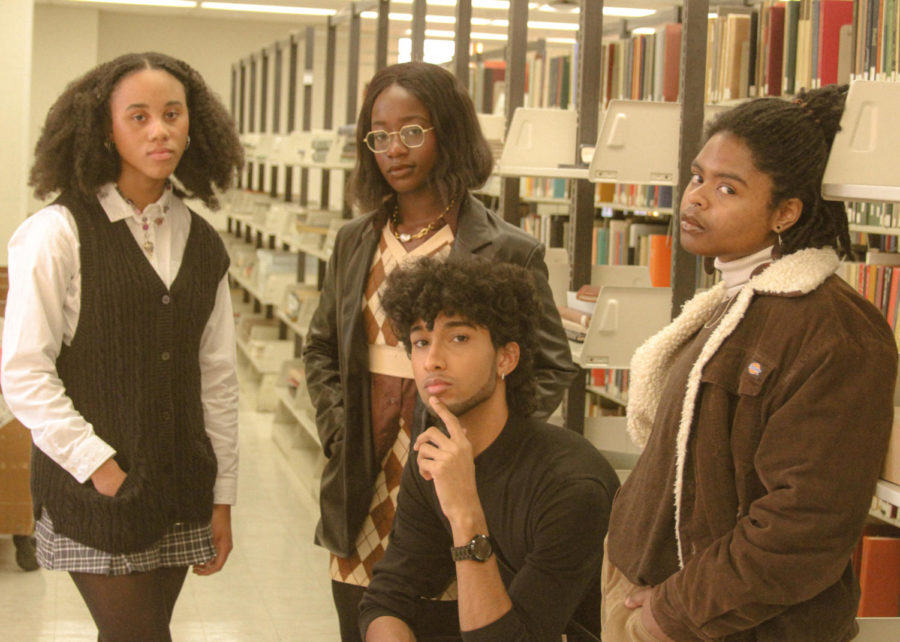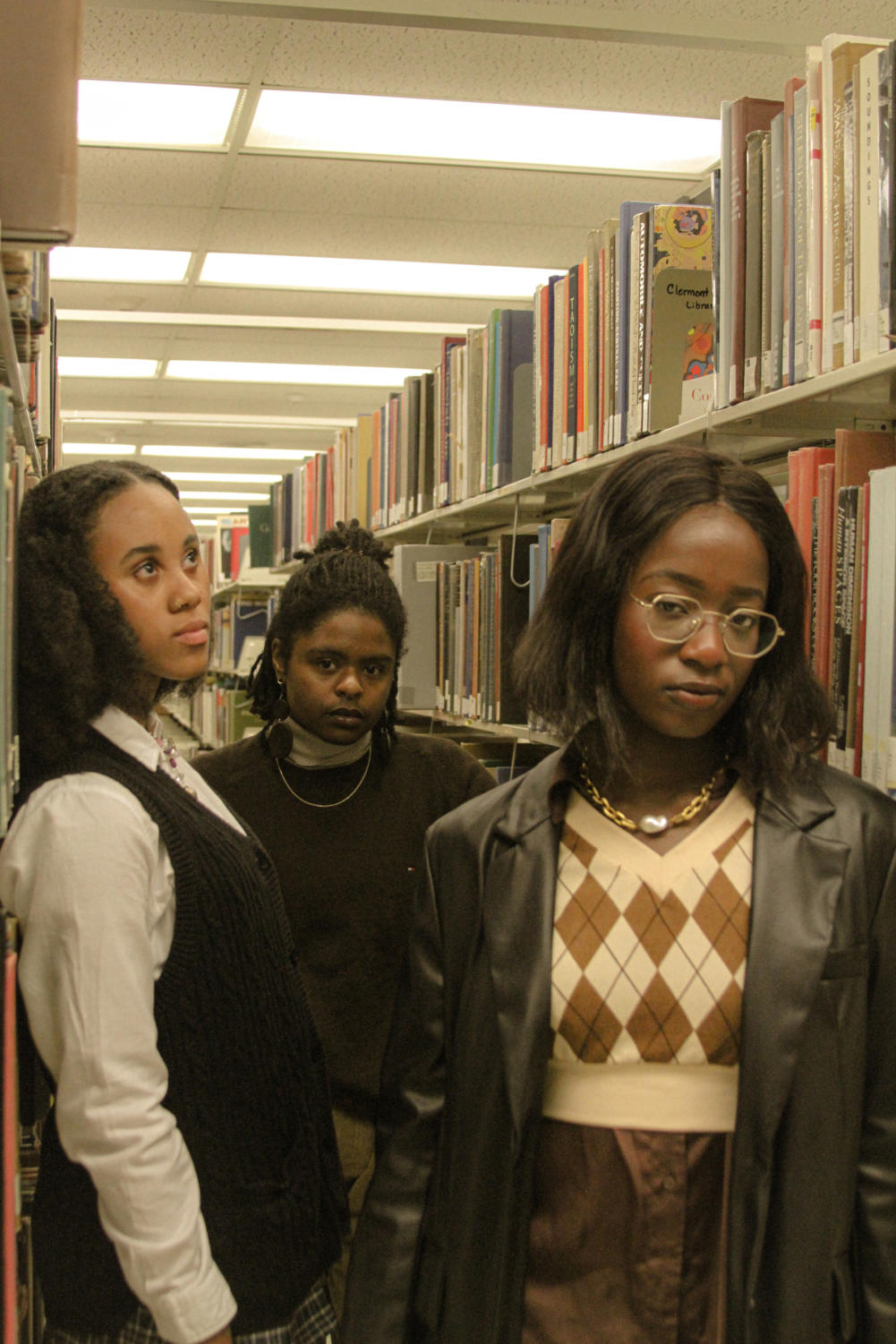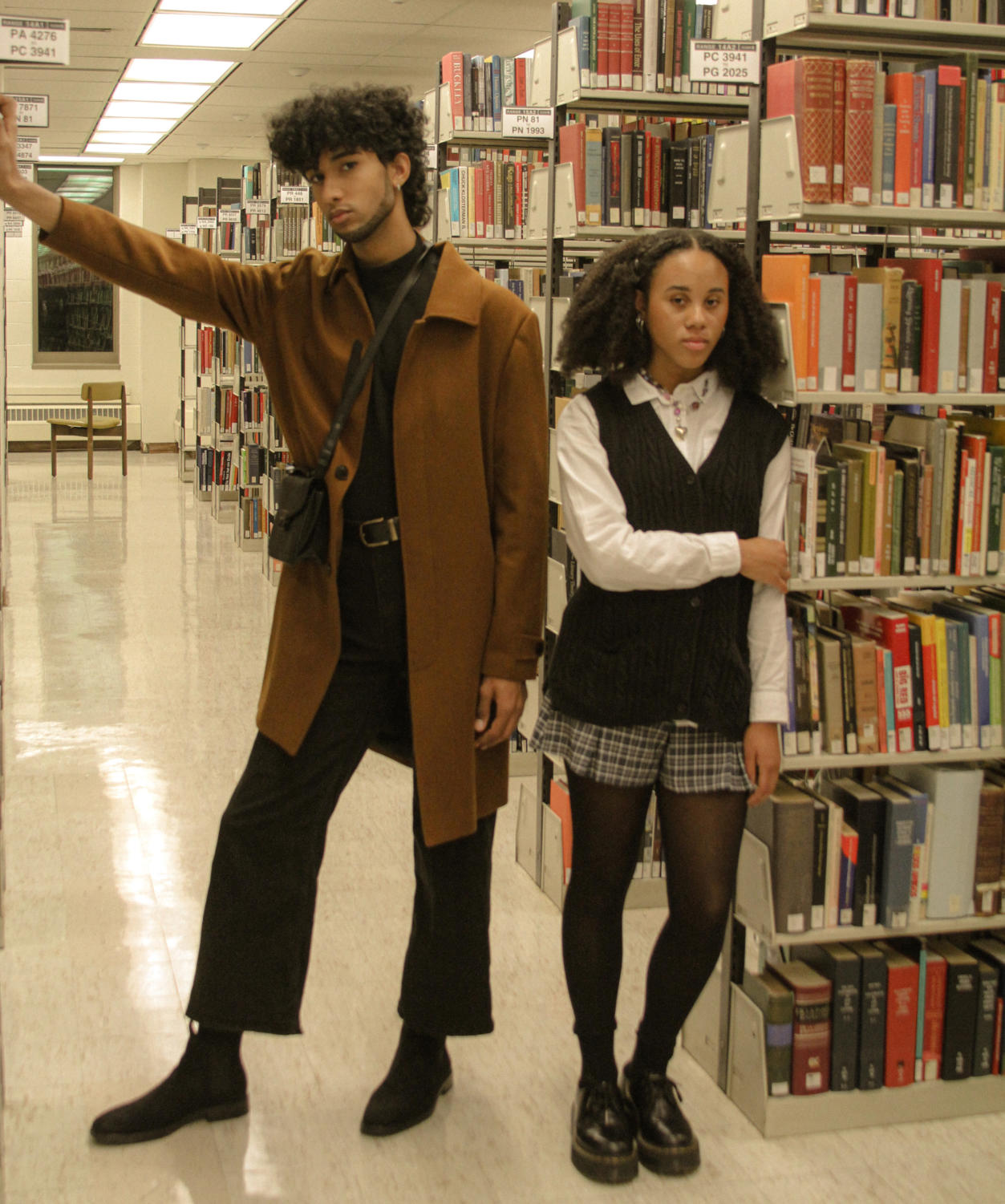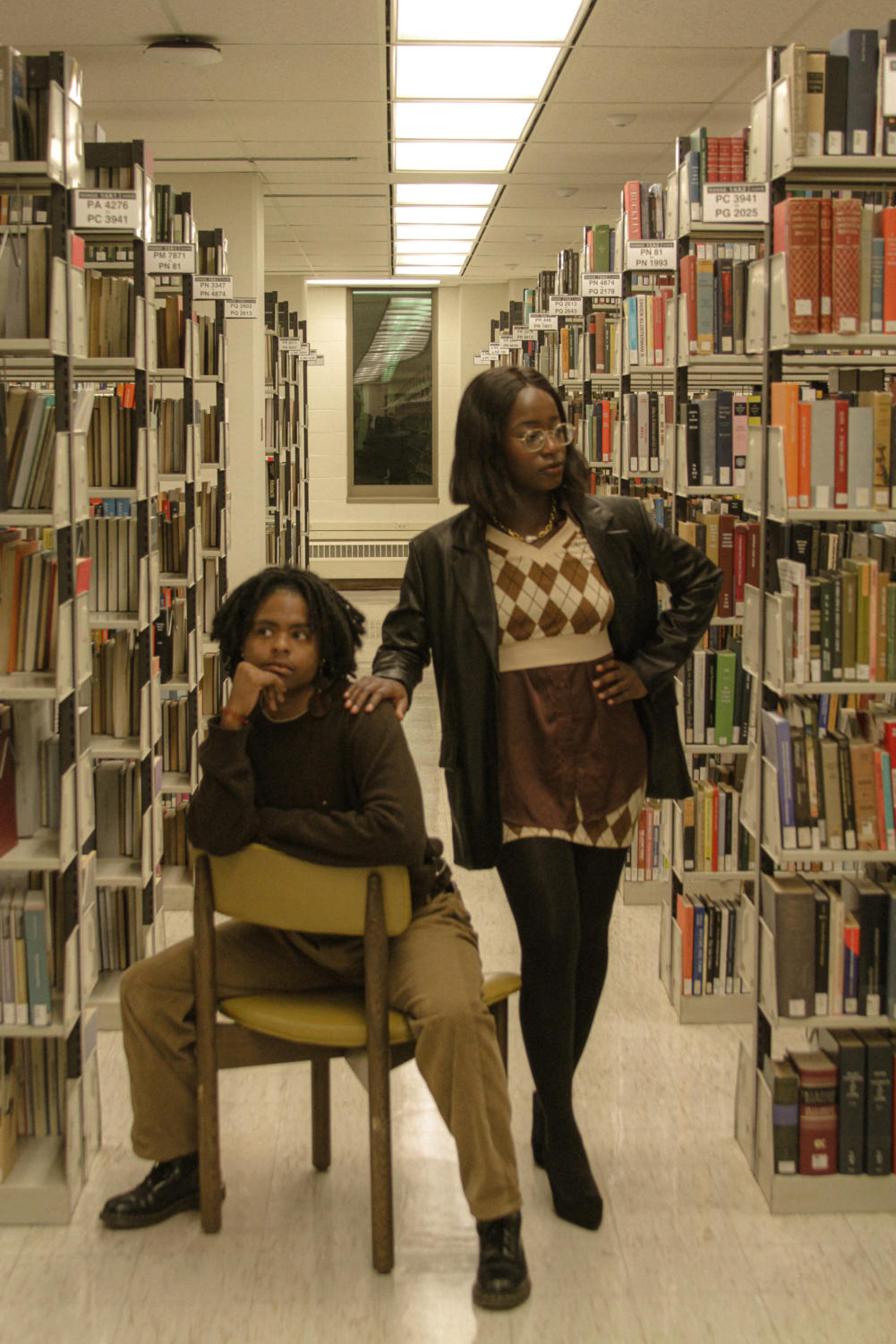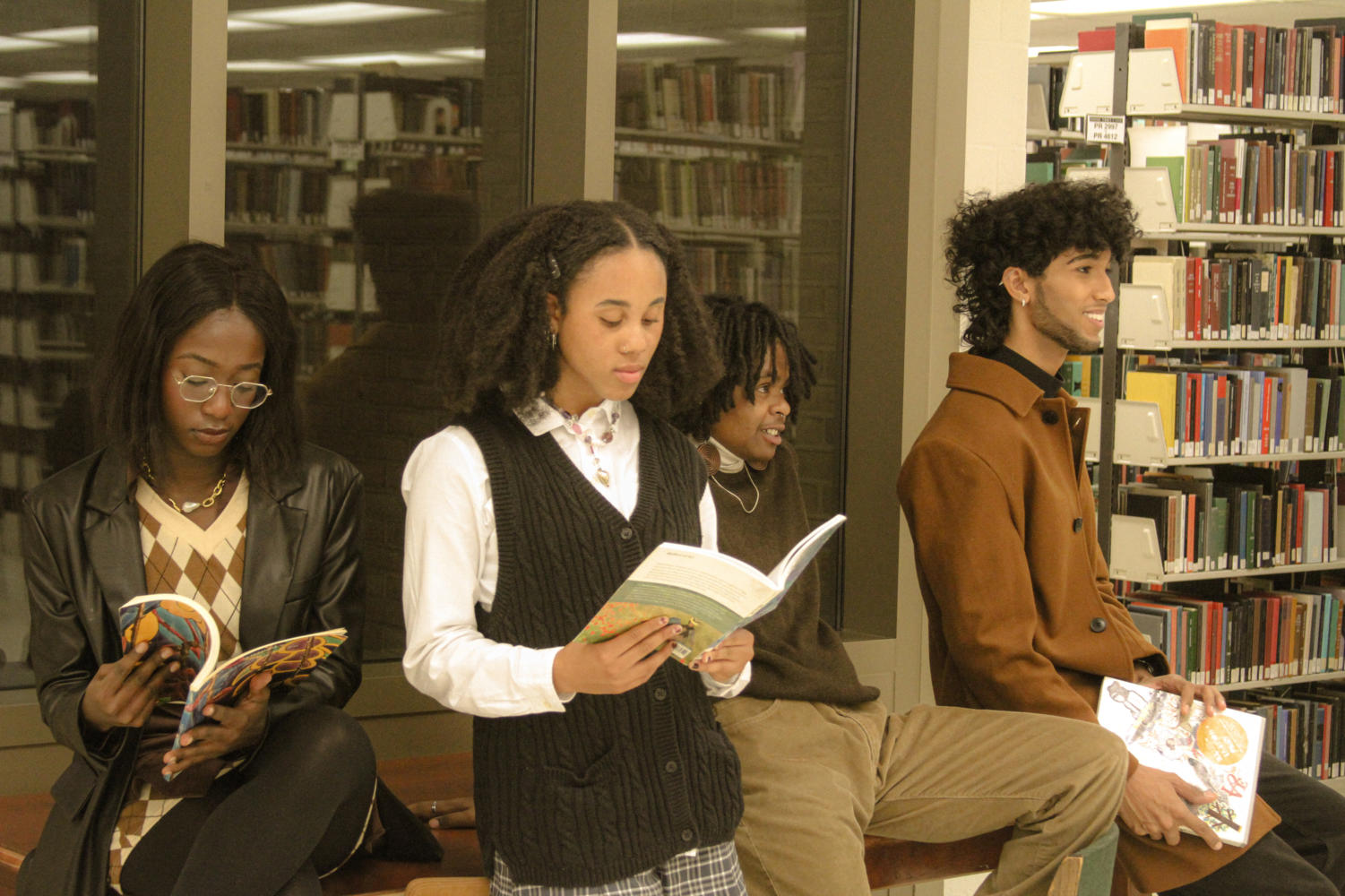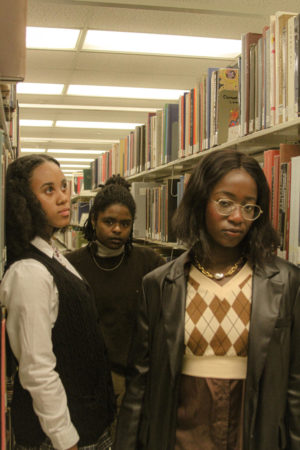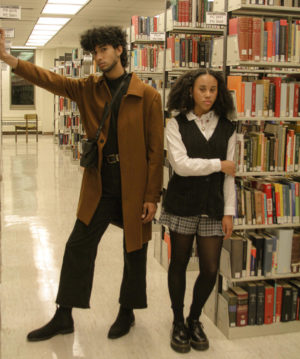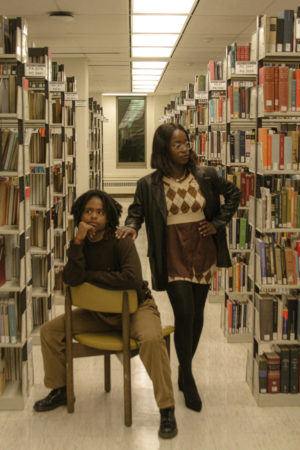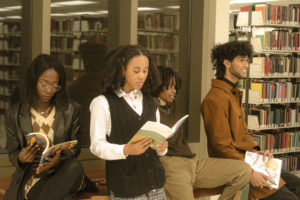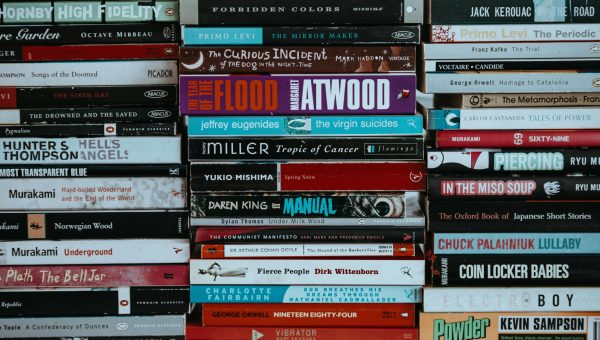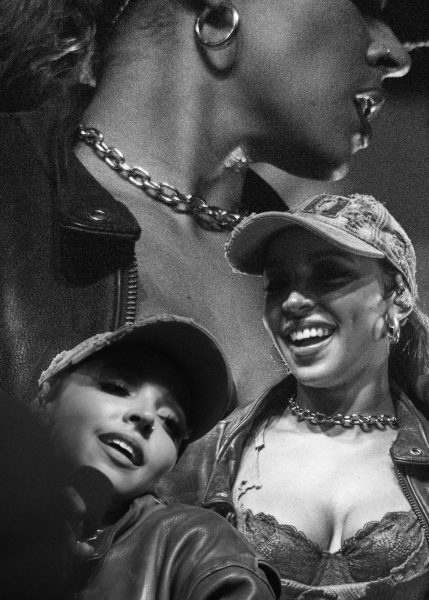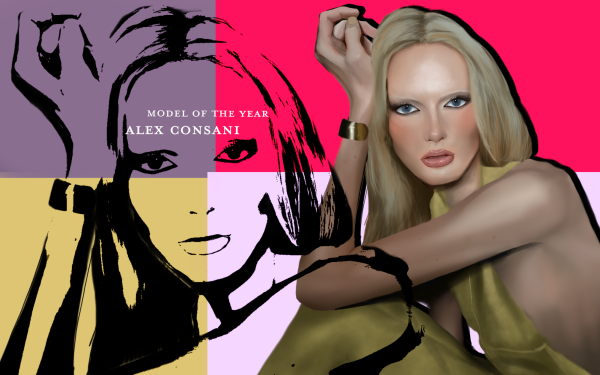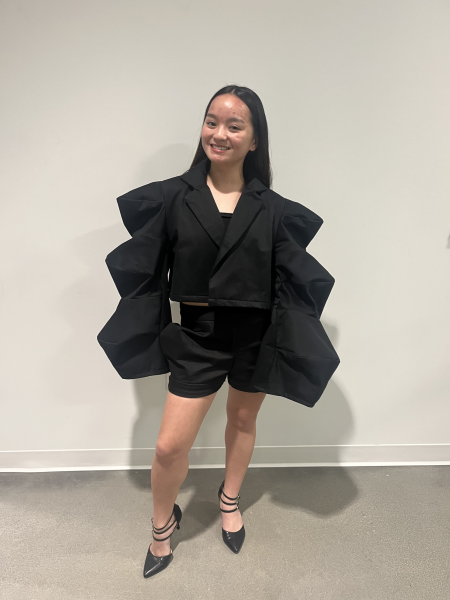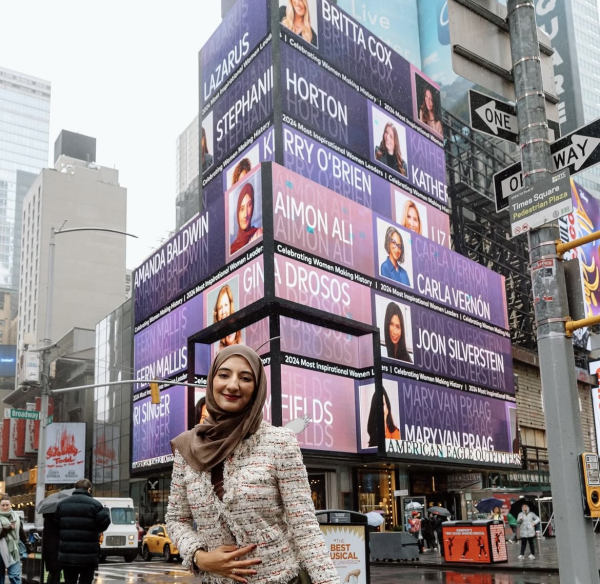can dark academia just be an aesthetic?
photo: kollin battle // stylist: aniyah davies // models: taliyah clark, joanna georges, austin watkins and sergio roper
Light your candles, brew some tea and turn on your favorite classical playlist. It’s autumn, and with that, the dark academia aesthetic is back in full swing for another season of chilly, school-filled months.
Like many other internet trends that rose during the pandemic, the dark academia aesthetic encompasses lifestyle choices such as hobbies, music, what you drink and how your room looks. The fascination with dark academia got its start on Tumblr in 2015 and reemerged on TikTok in 2020, Editorialist reports. Posts tagged with dark academia often include gothic images of old, elite schools, such as Cambridge, Oxford or Harvard. Books like “The Picture of Dorian Gray,” “The Secret History,” “Wuthering Heights” or “Frankenstein” influenced dark academia, as well as movies including “Dead Poets Society,” “Kill Your Darlings” and “The Imitation Game.” Aesthetic coffee, tea, candles and Greek architecture are a few more elements of this aesthetic.
Influencers interviewed by The New York Times consider the style “‘a very open community,’” but many would disagree. Problems plague this aesthetic, including academic elitism. An aesthetic based on reading classics, enjoying classical music and Ivy League education is not accessible to everyone. For example, the heavy emphasis on reading leaves out a large demographic of people. On average, 79% of adults in the U.S. are literate, according to the National Center for Education Statistics. APM Research Lab also reported that 54% of U.S. adults read below a sixth-grade level. In other words, classics are out of their reach. Higher education is out of reach for many Americans due to financial constraints, being a first-generation student, not having access to a guidance counselor or coming from a low-income school. Because this aesthetic romanticizes elite academia, it can be exclusionary and greatly lacking in diversity.
Not everyone goes to an elite school in New England or Europe, but they still want to consume dark academia media. They could pick any title mentioned above, movie or book, and it will showcase white, straight characters. Because many of the books are classics, there are many outdated ideals, terms, politics and a serious lack of representation. The lack of representation is concerning, especially when it’s part of a trend consumed from a visual aspect. This diversity loss causes people to not see themselves in this style. Unfortunately, this may lead them to not participate in something they could enjoy.
During the pandemic, people took to the internet to idealize aspects of life that felt unattainable. Want to frolic in a meadow in the countryside? Cottagecore. Want to feel like you’re at Hogwarts, studying by candlelight? Dark academia. This romanticization could lead to romanticizing much more problematic themes, often found in the pages of the classics that inspire this trend. For instance, in The Picture of Dorian Gray, anti-Semitic rhetoric and attitudes are scattered throughout the book.
Dark academia has been criticized for Eurocentrism, academic elitism and being exclusionary toward people outside of the white, cishet characters and creators. Is it OK to enjoy the trend for what it is on the surface: an aesthetic filled with neutrals, tweed and gothic architecture? Or should more be taken into account, re-examined and maybe reworked for more to enjoy? Moderation works best. One can enjoy the aesthetic, but also keep in mind its faults. Try to be more inclusive in the media consumed such as reading books or watching movies that feature people of color, LGBTQ+ people or any other underrepresented group. It is also worth following minority content creators.
Ultimately, everyone wants a community that they are happy and comfortable in. One of the most important parts of being comfortable is seeing yourself in other community members, and knowing the people that are different from you are open-minded and respectful. Everyone can do their part by trying to make dark academia a more diverse and inclusive aesthetic, while also appreciating all of its cozy autumn vibes.
Support Student Media
Hi, I’m Catie Pusateri, the Editor-in-Chief of A Magazine. My staff and I are committed to bringing you the most important and entertaining news from the realms of fashion, beauty and culture. We are full-time students and hard-working journalists. While we receive support from the student media fee and earned revenue such as advertising, both of those continue to decline. Your generous gift of any amount will help enhance our student experience as we grow into working professionals. Please go here to donate to A Magazine.

